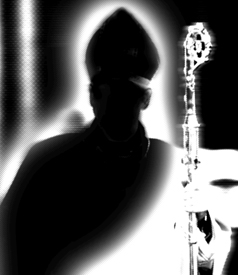These days, many U.S. Catholic bishops don’t seem to understand the distinction between church and state. In fact, there’s a powerful lobbying group working on the bishops’ behalf, the U.S. Conference of Catholic Bishops (USCCB), and they’ve been trying to call the shots on health-care reform. Unfortunately for women, they’ve been having some success.
As the U.S. House of Representatives prepared its version of health-care reform last year, it seemed that women’s reproductive health concerns, such as abortion, would not be an issue. From the very beginning of the debate, there was an unwritten agreement that this would not be an “abortion” bill. Pro-choice advocates reluctantly agreed not to pursue increased access to abortion care during the reform process, and anti-choice advocates seemed willing not to further restrict access.
However, at the 11th hour, the bishops swooped in and insisted on an amendment to the health-care reform bill, known as Stupak-Pitts, to significantly restrict access to abortion.
The bishops had been having words with influential politicians throughout the fall. According to the Associated Press, Boston’s Cardinal Sean O’Malley raised the matter with President Barack Obama while standing near the altar at Sen. Ted Kennedy’s funeral mass in September. And on the day before the vote, Cardinal Theodore McCarrick spoke with Speaker of the House Nancy Pelosi from Rome to urge further restrictions on abortion.
The U.S. Conference of Catholic Bishops is far more than just a gathering of religious leaders of the 200-plus Catholic dioceses (territories) in the U.S. With 350 staff members, an annual budget of $148 million and spacious offices on a five-acre plot of land in Northeast Washington, D.C. (part of the Catholic University of America complex), it’s more like a trade organization. And, like many trade associations, it can and does make noise in the media and on Capitol Hill when it perceives its interests are at stake.
In fact, health care is big, big business for the Catholic Church in the U.S. There are 624 Catholic hospitals in the country, along with 373 other Catholic health-care institutions. In 2008, more than 90 million patients were treated at Catholic health-care facilities in the U.S. And it’s not just the patients or their insurers who pay for Catholic health care: Catholic hospitals depend on federal funding from Medicaid or Medicare. With well over half of their revenue coming from the government, it’s safe to say that Catholic hospitals would be carefully watching the progress of federal health-care reform….
Excerpted from the Winter 2010 issue of Ms. To read the rest of this startling exposé and have the issue delivered to your door, join the Ms. community.
JON O’BRIEN is president of Catholics for Choice in Washington, D.C.
